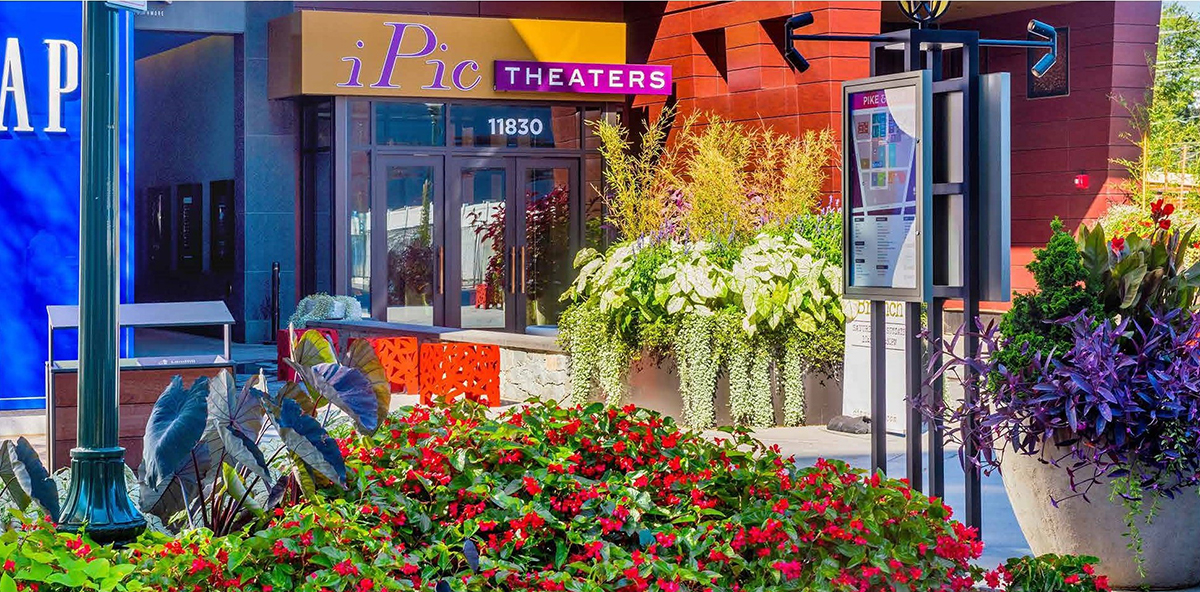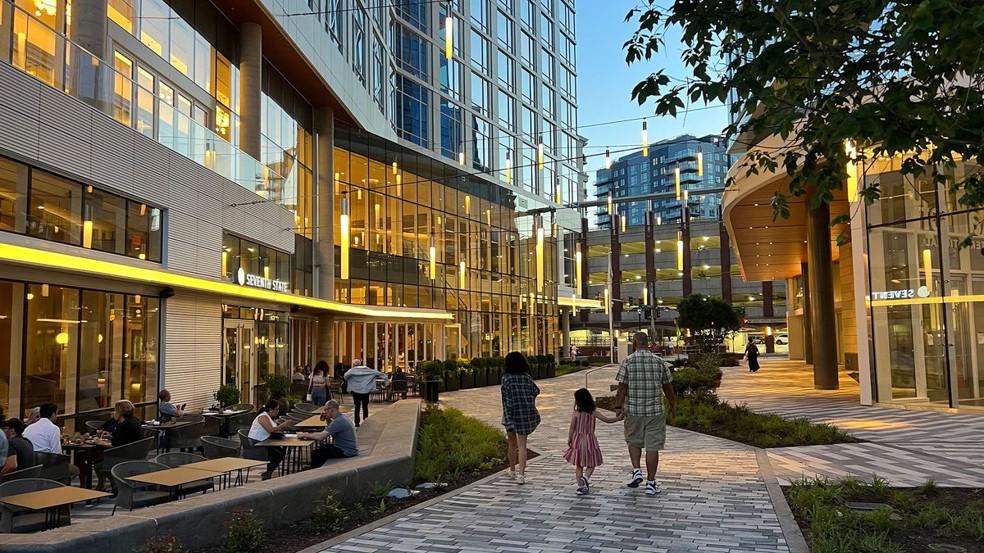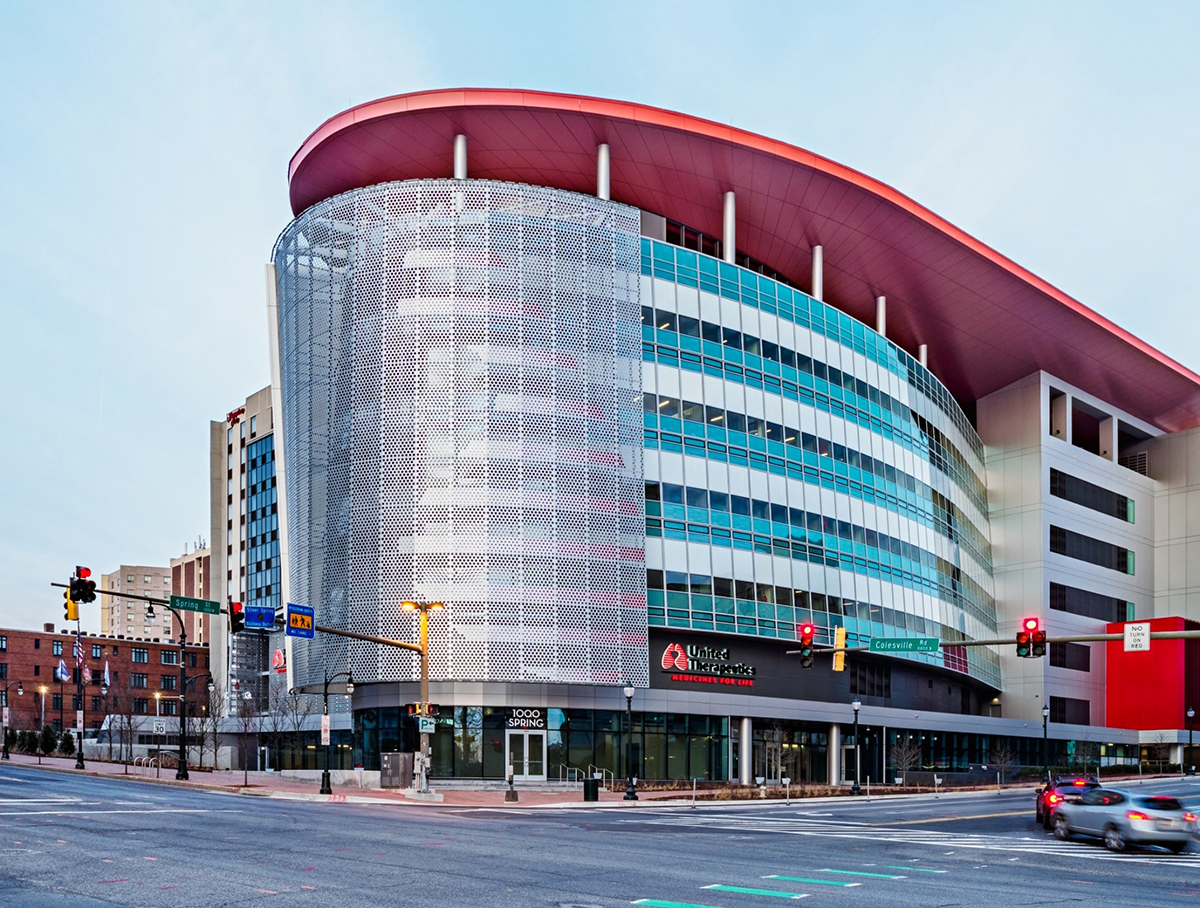Montgomery County just updated its policy that drives the amenities communities receive with new development
Every day, Montgomery County residents and visitors enjoy the public benefits of private development.
At Pike & Rose in North Bethesda, sculptures and colorful murals and landscaping greet diners and shoppers. Another nearby development, Strathmore Square, encircles a 1.2-acre publicly accessible park with space for pop-up markets and performances. The United Therapeutics office building in downtown Silver Spring generates its own solar power, giving it a net-zero carbon footprint. Marriott’s high-rise headquarters in downtown Bethesda includes a wide, lighted walkway between Wisconsin and Woodmont avenues. Many of these developments also offer subsidized, affordable housing options for county residents.
Such amenities help make new developments – and, just as important, their surrounding communities – more attractive, safe, inclusive, and environmentally friendly.

Pike & Rose development in North Bethesda.
They’re the result of “incentivized zoning.” Like planning agencies across the country, Montgomery Planning incentivizes developers to provide – and pay for – amenities that benefit the broader community in exchange for allowing them to build taller and larger buildings near transit and in major job hubs. Since 2010, we’ve assigned different amenities various point values; developers seeking additional density offer to deliver certain amenities to reach a required number of points.
This approach has led to public amenities in more than 67 developments since 2010, including affordable housing, more walkable and bikeable street grids, safer pedestrian crossings, farmland preservation, and expanded tree canopy. Many of these are benefits the public wouldn’t have otherwise received. Our policy, which was called the Public Benefits Points System, has provided a transparent and trackable way for developers and the public to see what’s promised – and what gets delivered.

Wide, lighted walkway between Wisconsin and Woodmont avenues at Marriott Headquarters in downtown Bethesda
Even so, we knew the policy can be modernized and improved. That’s why we at Montgomery Planning just completed its first comprehensive update that ensures developers are incentivized to deliver the benefits our communities most want and need.
After two years of analysis and input from the private sector, county experts, and the public, we found ways to make it more simple, clear, and flexible. Based on Montgomery Planning’s recommendations, the Montgomery County Council approved a zoning text amendment on July 29, 2025, that implements the policy update. These changes do not rezone any parcels or affect existing developments. Rather, the amenities available for future developments are streamlined and make them better reflect both the county’s broad policy priorities and communities’ master plan priorities.
Here’s what we recommended changing and why
Developers often seek to build taller and larger buildings in high-demand areas like land near Metro stations and major job hubs. This occurs most often in our Commercial-Residential (CR) zones, such as in downtown Bethesda, Silver Spring, Wheaton, and areas around Rockville. These areas also are where we focus much of our new development in compact, walkable, and often high-rise communities. This helps Montgomery County absorb population growth without adding to traffic congestion or environmentally destructive suburban sprawl.
Developers also sometimes seek additional density in Commercial/Residential/Town (CRT) zones, such as parts of Kensington and the Shady Grove area, where mid-rise buildings include townhouses, apartments, and businesses.
The CR and CRT zones cover only 3% of the county’s land. However, they’re some of the most sought after for development. They’re also critical to fueling the county’s economic growth and keeping it economically competitive in the Washington, DC region and beyond.
The streamlined list of options for development benefits are now better aligned with the county’s top two policy goals: 1) Build more affordable housing, particularly for larger families and lower-income residents, and 2) Reduce, and soon eliminate, greenhouse gas emissions, such as with buildings that exceed energy efficiency requirements or use renewable energy.

United Therapeutics building in downtown Silver Spring
The benefits options also better reflect community priorities in local master plans to: 1) Add infrastructure that supports compact development, such as more walkable street grids and extended recreational trails, and 2) Provide public art, neighborhood retail, green space or other amenities that make communities attractive and allow residents to easily walk or bike to daily needs.
As Montgomery County continues to grow, developers will continue to build. This updated policy will help inform how to best incentivize developers to make sure our communities share in the benefits.
 About the author
About the authorAtul Sharma is Montgomery Planning’s Design, Policy, and Placemaking Division Chief. As an architectural and urban designer, Atul has extensive experience in integrated community planning, transit-oriented development, large-scale sustainable master planning, mixed-use communities, neighborhood design, design guidelines and contextual architecture. During his career, Atul has worked in the United States and internationally on both architecture and urban design projects with some of the top leaders in planning, architecture and real estate development. Atul loves creating places that are sustainable and contextual and elevate the experience of everyday life for all members of the community. Atul also has a keen interest in improving the practice of design through research and exploring emerging technological trends.